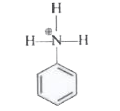Which of the following set of compounds will show metal deficiency defect?
NaCl
FeO
KCl
ZnO
The correct Answer is:B
To solve the question regarding which set of compounds will show a metal deficiency defect, we can follow these steps:
Step 1: Understand Metal Deficiency Defect
Metal deficiency defect occurs when a compound contains fewer metal ions than what is expected based on its formula. This defect typically arises in compounds where the metal exhibits variable valency.
Step 2: Identify Characteristics of Compounds with Metal Deficiency Defect
- The compounds that show metal deficiency defects usually involve metals that can exist in more than one oxidation state (variable valency).
- Common examples include oxides of transition metals, where the metal can lose different numbers of electrons.
Step 3: Analyze the Given Options
Without specific options provided, we can consider common compounds that exhibit metal deficiency defects:
- Ferrous Oxide (FeO): Contains iron in the +2 oxidation state but can also exist in the +3 state (Fe2O3). This can lead to a deficiency of Fe in the structure.
- Copper(I) Oxide (Cu2O): Copper can exist in both +1 and +2 oxidation states. If there is a deficiency of Cu, it can lead to a defect.
- Zinc Oxide (ZnO): Zinc typically has a +2 oxidation state, and while it does not show metal deficiency defect as prominently as the others, it can be considered in certain contexts.
Step 4: Conclusion
Based on the understanding of metal deficiency defects, Ferrous Oxide (FeO) is a classic example of a compound that shows this defect due to the variable valency of iron.
Thus, if Ferrous Oxide is among the options provided, it would be the correct answer.
Final Answer
The correct answer is Ferrous Oxide (FeO).
---
Metal deficiency defect occurs when a compound contains fewer metal ions than what is expected based on its formula. This defect typically arises in compounds where the metal exhibits variable valency.
- The compounds that show metal deficiency defects usually involve metals that can exist in more than one oxidation state (variable valency).
- Common examples include oxides of transition metals, where the metal can lose different numbers of electrons.
Without specific options provided, we can consider common compounds that exhibit metal deficiency defects:
- Ferrous Oxide (FeO): Contains iron in the +2 oxidation state but can also exist in the +3 state (Fe2O3). This can lead to a deficiency of Fe in the structure.
- Copper(I) Oxide (Cu2O): Copper can exist in both +1 and +2 oxidation states. If there is a deficiency of Cu, it can lead to a defect.
- Zinc Oxide (ZnO): Zinc typically has a +2 oxidation state, and while it does not show metal deficiency defect as prominently as the others, it can be considered in certain contexts.
Based on the understanding of metal deficiency defects, Ferrous Oxide (FeO) is a classic example of a compound that shows this defect due to the variable valency of iron.
The correct answer is Ferrous Oxide (FeO).
Topper's Solved these Questions
- THE SOLID STATE BOOK - NCERT FINGERTPS ENGLISHCHAPTER - THE SOLID STATE EXERCISE - HOTS
7 Videos
- THE SOLID STATE BOOK - NCERT FINGERTPS ENGLISHCHAPTER - THE SOLID STATE EXERCISE - EXEMPLAR PROBLEMS
37 Videos
- THE P-BLOCK ELEMENTS BOOK - NCERT FINGERTPS ENGLISHCHAPTER - THE P-BLOCK ELEMENTS EXERCISE - Assertion And Reason
15 Videos
Similar Questions
Knowledge Check
Which of the following compounds will not show resonance?
A BCH2=CH−CH=CH−⊕CH2C
BCH2=CH−CH=CH−⊕CH2C D
D
Which one of the following compounds will show enantiomerism ?
A B
B C
C D
D
Which of the following compounds will not show enolisation?
A B
B C
C D
D
Which of the following nitro compounds will show tautomerism?
View SolutionWhich of the following compound will show optical isomerism
View SolutionWhich of the following compound will show geometrical isomerism?
View SolutionWhich of the following compound will not show tautomerism ?
View SolutionWhich of the following compound does not show tautomerism?
View Solution
